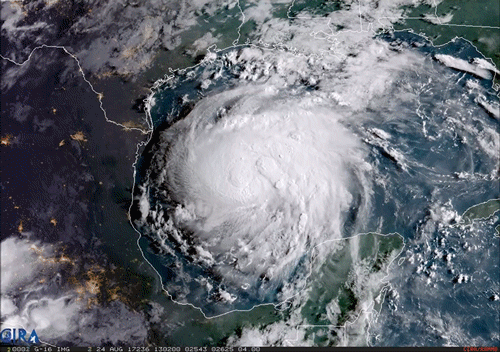11 November 2017
Scientists have created a simple algorithm called flowtrace for visualizing time-varying flow fields in biological samples. Here, the vortices created by a starfish larvae can easily be observed. Linear arrays of cilia surround the surface of the larvae to provide propulsion and aid in capturing prey. The coordinated motion of the ciliary bands produce complex fluid flow around the organism, which can be visualized using this new technique.
Source: http://www.wgilpin.com/flowtrace_docs/
Article in Journal of Experimental Biology : https://doi.org/10.1242/jeb.162511
Article in Nature Physics : https://doi.org/10.1038/nphys3981
View Original Post on Google+
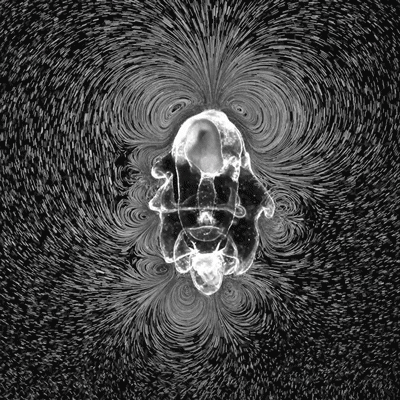
4 November 2017
Scientists at Harvard University have created a microrobot that can traverse both aquatic and aerial environments. The millimeter-sized robot is propelled using flapping wings that run at 220 - 300 Hz in air and about 9 - 13 Hz in water.
In order to transition from swimming to flying, the microrobot uses a small chamber to perform electrolysis , which converts water into a mixture of hydrogen and oxygen gases (oxyhydrogen). This increases the buoyancy of the microrobot and allows its wings to rise above the surface of the water. However, this is insufficient to escape the surface tension of the water, so the gases are then ignited to propel the microrobot upwards into the air.
Source: https://goo.gl/fBpcaf (Wyss Institute)
#ScienceGIF #Science #GIF #Robot #Microrobot #Aerial #Aquatic #Flying #Swimming #Buoyancy #Hybrid #Water #Electrolysis #Combustion #Wing #Flapping #Mechanical #Engineering #Biology #Biological #Wyss #Harvard
View Original Post on Google+
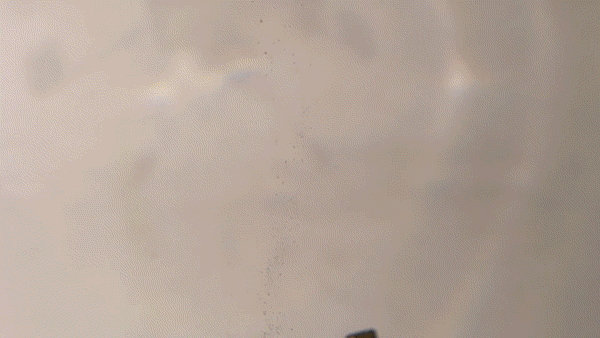
28 October 2017
Astronomers have observed what they believe to be the first interstellar object entering the solar system from elsewhere in our galaxy. The small asteroid or comet – designated A/2017 U1 -- is an estimated 400m in diameter and moving remarkably fast at 25.5km/s.
It was first detected on October 19th by the Pan-STARRS 1 telescope in Haleakala, Hawaii, during a routine search for near-Earth objects. The extreme orbit of the object, nearly perpendicular to the ecliptic plane , led researchers to conclude that it likely originated from beyond our solar system. On October 14th, A/2017 U1 passed within 24 million kilometers of Earth (~60x the distance to the Moon) on its way back to interstellar space.
Source: https://goo.gl/Dv7BAv (NASA)
#ScienceGIF #Science #GIF #NASA #Space #Interstellar #Comet #Asteroid #Discovery #Astronomer #Satellite #Solar #System #Galaxy #Hawaii
View Original Post on Google+
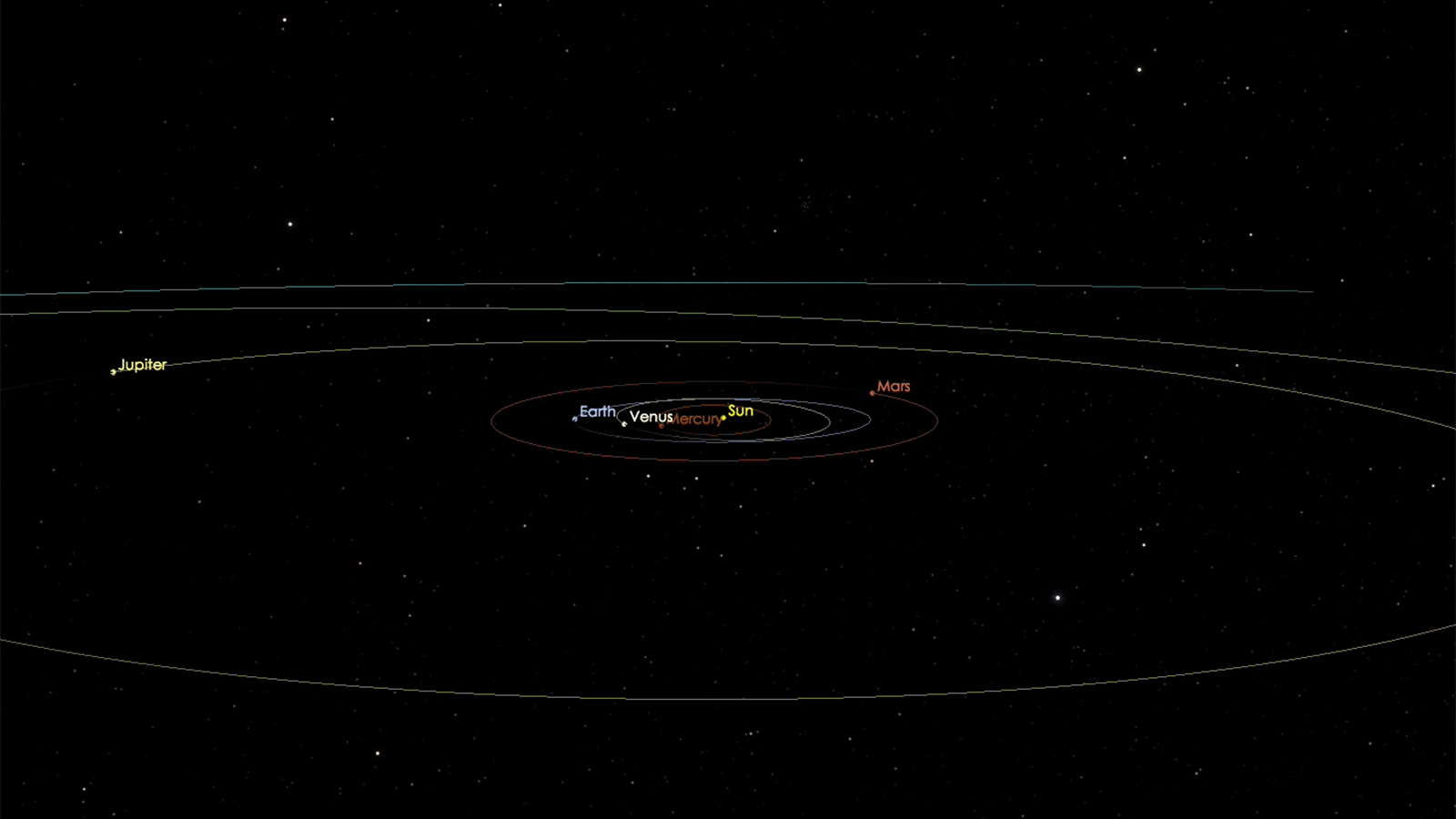
21 October 2017
On August 17th, a gravitational wave was detected by the US-based LIGO and European-based VIRGO observatories. A couple seconds later, NASA ‘s Fermi space telescope picked up a pulse of high-energy gamma-ray radiation from the constellation Hydra. Astronomers across the planet were notified of the event and over the next few days, hundreds of telescopes turned their eyes towards a galaxy located 130 million light-years from Earth.
For the first time ever, scientists have detected gravitational waves and light generated as two neutron stars merged together. Neutron stars are the leftover cores of massive stars that exploded as supernovas long ago. They are the densest known objects in the Universe, squeezing a mass equivalent to that of the Sun into a sphere only a few miles in diameter.
As the two neutron stars spiraled together, they shed energy in the form of spacetime-distorting gravitational waves. When they finally merged, an immense burst of gamma-ray radiation was expelled, a phenomenon long hypothesized by astrophysicists. The light from this kilonova was imaged by both Earth- and space-based telescopes for days after the event was first detected.
Source: https://goo.gl/vfttC6 (NASA)
Learn More: https://goo.gl/xewu6M (LIGO)
#ScienceGIF #Science #GIF #LIGO #VIRGO #NASA #JPL #Physics #Neutron #Star #Gravitational #Wave #Gamma #XRay #Burst #Energy #Astrophysics #Telescope #Satellite
View Original Post on Google+

7 October 2017
Cheetahs are the fastest land animals on the planet, capable of reaching top speeds of 112 km/h (70 mph) during short bursts. They are famous for their high-speed pursuit of prey across the plains of Sub-Saharan Africa and are frequently featured in nature documentaries.
This female cheetah from the Cincinnati Zoo was recorded using a high-speed camera (1,200 fps) mounted on a sliding rig. She traversed a 100 meter distance in only 5.95 seconds, reaching a top speed of 98 km/h (61 mph). This GIF depicts a 0.4-second segment of that sprint and reveals the rapid leg motion and stability required to attain such high speeds. The cheetah uses its long tail to perform rudder-like steering in order to make sharp turns while chasing prey.
It is estimated that only 7,100 individuals remain in the wild, prompting calls for the cheetah to be classified as an endangered species. Habitat loss, poaching, and the illegal pet trade have all contributed to the significant decline over recent years.
Source: https://vimeo.com/53914149
#ScienceGIF #Science #GIF #Cheetah #Animal #Cat #Feline #Slow #Motion #SlowMo #SloMo #NationalGeographic #NatGeo #Zoo
View Original Post on Google+
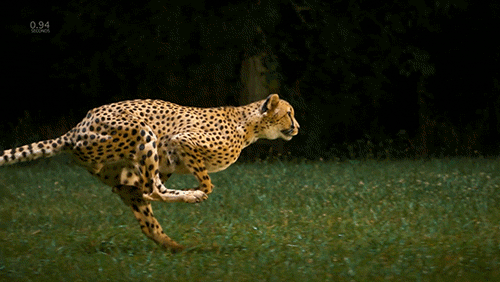
30 September 2017
The classical definition of a superacid is any acid with an acidity greater than that of 100% pure sulfuric acid (H2SO4). In highly concentrated solutions, the Henderson-Hasselbalch equation used to define the pH scale breaks down due to large variations in the activity coefficients. In order to measure the acidity of very concentrated solutions, a similar metric known as the Hammett acidity function (H0) was introduced. Using this scale, 100% sulfuric acid has an H0=-12.
The acid used in this GIF is chlorosulfuric acid (HSO3Cl), which has an H0=-12.78, therefore making it a superacid. It reacts violently with the water in the tangerine skin to yield sulfuric acid and hydrogen chloride (HCl) gas. The sulfuric acid then reacts with the sucrose of the tangerine via an intense exothermic dehydration reaction to produce carbon in its black graphite form.
Source: https://youtu.be/cTLBrqcuLBU (Chemistry Flicks)
#ScienceGIF #Science #GIF #Chlorosulfonic #Acid #Tangerine #Chemistry #Chemical #Reaction
View Original Post on Google+
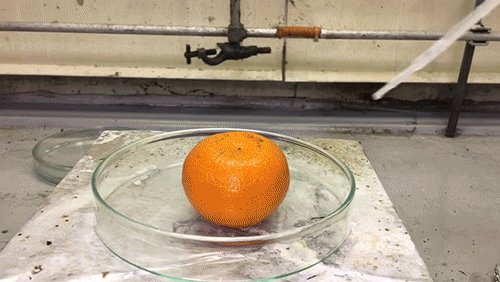
23 September 2017
A soap bubble exposed to very cold temperatures (-25°C/-13°F) will quickly freeze as ice crystals form and coalesce into an icy sphere. The intricate detail of the expanding crystals can easily be seen as the liquid water transitions to its solid state.
Source https://youtu.be/kcUYvUpc58E
#ScienceGIF #Science #GIF #Bubble #Freeze #Freezing #Cold #Liquid #Ice #Transition #Matter #Crystal #Soap
View Original Post on Google+
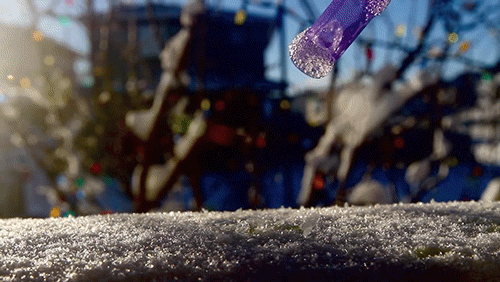
15 September 2017
At 4:55 am PDT, NASA’s Deep Space Network lost contact with the Cassini spacecraft as it plunged into the atmosphere of Saturn.
This marks the end of a nearly 20-year-long, 4.9 billion mile mission that began aboard a Titan IV rocket in Cape Canaveral on October 15, 1997. After almost seven years of travel, including flybys of Venus, Earth, and Jupiter, Cassini entered orbit around the sixth planet of our Solar System on July 1, 2004, where it remained for over a decade. Earlier this year, Cassini began a series of harrowing dives between Saturn and its majestic rings, culminating today with its destruction in the upper atmosphere of the gas giant. With fuel running low, this method of disposal was selected to minimize the risk of biological contamination of Saturn ‘s moons.
Cassini is responsible for an immense body of knowledge about our Solar System. From tests validating Einstein ‘s theory of general relativity to discovering six new moons orbiting Saturn to landing the Huygens probe on the surface of Titan, the spacecraft has been a workhorse of NASA, ESA, and ASI for many years.
And now she has become one with the planet she so magnificently portrayed.
Sic Itur Ad Astra
Source: https://youtu.be/xrGAQCq9BMU (NASA JPL, Erik Wernquist)
See Cassini’s Finale Images: https://saturn.jpl.nasa.gov/galleries/raw-images
#ScienceGIF #Science #GIF #Cassini #Huygens #NASA #JPL #ESA #ASI #Saturn #Mission #Space #Discovery #Orbit #Rings #Astronomy #Astrophysics #Destruction #Burn #Finale
View Original Post on Google+
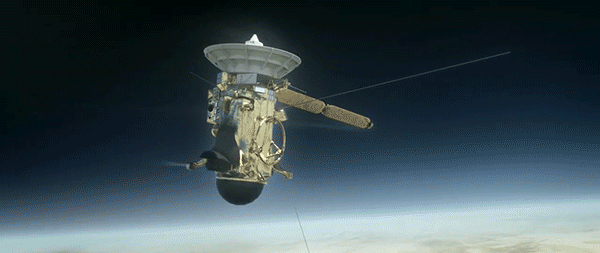
9 September 2017
This stunning footage from NASA’s Cassini spacecraft depicts a never-before-seen perspective of Saturn ‘s majestic rings. Cassini captured the images from within the narrow gap between the planet and its rings during one of the orbital dives in its Grand Finale mission.
This coming Friday, September 15th, Cassini will be sent plunging into Saturn ‘s atmosphere where it will be destroyed by the intense heat of atmospheric reentry. This method of disposal was selected to minimize the risk of biological contamination of Saturn’s moons. Data pertaining to atmospheric composition will be transmitted until the very end.
Cassini is responsible for an immense body of knowledge about our Solar System. From tests validating Einstein ‘s theory of general relativity to discovering seven new moons orbiting Saturn to landing the Huygens probe on the surface of Titan, the spacecraft has been a workhorse of NASA, ESA, and ASI for well over a decade.
#ScienceGIF #Science #GIF #Cassini #Huygens #Saturn #NASA #JPL #ESA #ASI #Space #Probe #Ring #Planetary #Astronomy #Astrophysics #Discovery
View Original Post on Google+
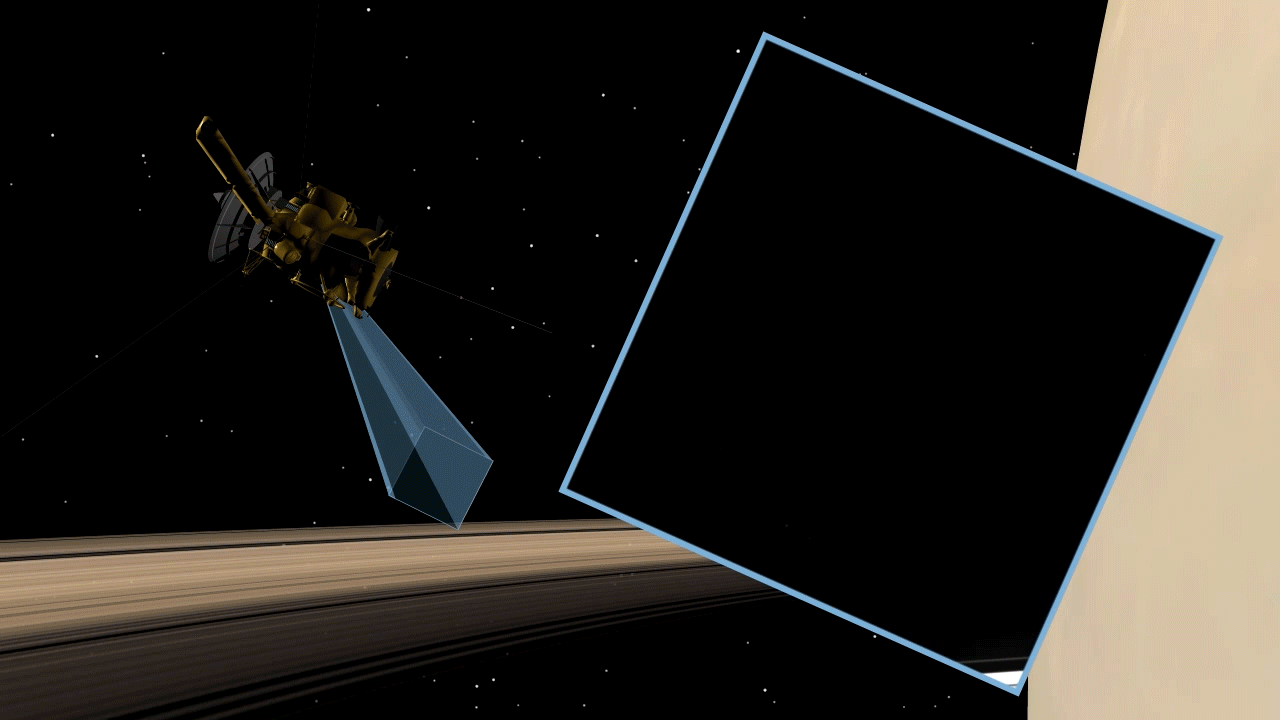
25 August 2017
This imagery captured by NOAA’s GOES-16 satellite yesterday depicts Harvey as it regained hurricane status over the Gulf of Mexico. It is now a major Category 4 cyclone bearing down on the Texas coast and all forecasts indicate it will be a devastating natural disaster. Torrential rainfall is predicted across much of central and eastern Texas, with some estimates as high as three feet of precipitation over the next week.
GOES-16 is the first of the next generation of geosynchronous environmental satellites jointly operated by NASA and NOAA that will provide atmospheric and surface measurements of the Earth. Data from the GOES system is used for weather forecasting, severe storm tracking, space weather monitoring, and meteorological research.
The forecasting efforts of NOAA’s National Weather Service have saved countless lives over its many years of existence and our country’s continued investment into its efforts will protect many more.
To anyone in the path of the storm, please stay safe and heed the directions of your local authorities.
Godspeed Texas.
Source: https://goo.gl/Ney4Xs (NOAA)
#ScienceGIF #Science #GIF #Hurricane #Harvey #GulfOfMexico #Gulf #Texas #Mexico #Tropical #Storm #NOAA #NASA #Satellite #GOES16 #Geocolor #Geosynchronous #Climate #Weather #Meteorology
View Original Post on Google+
